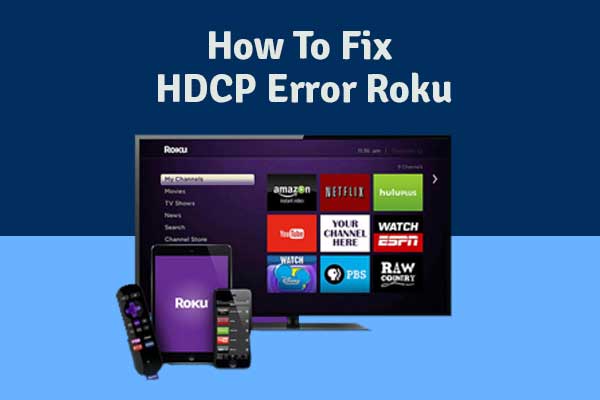With a fast Google search, it’s easy to see why so many Roku users are having trouble with the HDCP error. On a black screen, it appears as a warning message, and on a purple screen, it appears as a notification. But why is this message appearing, and what can you do about it? The following article will explain HDCP and include tried-and-true methods for getting your streaming device up and running. Let’s get started right away, without further ado.
High-bandwidth Digital Content Protection is an acronym for HDCP. This is a basic security principle used by most TV and movie companies, and it was developed by Intel. If you recall how difficult it was to make a copy of some VHS tapes in the past, the HDCP is essentially the same thing for digital media. It is compatible with all streaming devices, cable boxes, and Blu-ray players that use HDMI connections. The most important thing to remember is that HDCP 2.2 is needed for 4K streaming, but more on that later.
Causes
There are two possible causes for the HDCP mistake (and can also show up as an error code 020). First, if the material you’re trying to stream doesn’t embrace content-protection technologies, you’ll get an error. The streaming device detects that your HDMI link isn’t HDCP compliant and shows an error message. If you’re using a faulty HDMI connector or cable, on the other hand, an error can appear. As a result, you should begin by looking at the cable or connector.
Unplug the old HDMI cable and reconnect with the new one if you have one lying around your house. The Roku can detect the switch and delete the error message automatically.
Resolve the Error
- If you see the purple screen while trying to stream 4K Ultra HD video, go through the instructions for setting up your Roku player for 4K. If the “HDCP Error Detected” message or a purple screen persists, proceed to the next stage.
- Unplug each end of the HDMI cable from your Roku player and your TV or AVR.
- Unplug your TV’s power cord and turn it off.
- Disconnect your Roku player’s power cable.
- Reconnect the HDMI cable on both ends, making sure each connector is firmly and safely connected.
- Reconnect your TV and Roku player’s power cords and wait for both devices to turn on (you may also need to press the power button on your TV remote).
- Replay the video if necessary.
Other Suggestions to Resolve the Error
- On your TV, try a different HDMI input.
- To make sure the HDMI cable you’re actually using isn’t defective, try using a shorter HDMI cable (less than 6 feet if possible).
- Try attaching the Roku player directly to the TV if you’re using an HDMI switch or AVR.
- If at all necessary, switch to a different television.
- If necessary, replace your computer monitor with a television.
- On your Roku player, experiment with different Display Settings. These options can be found under Settings > Display sort.
- If you’re seeing the “HDCP Error Detected” message or purple screen for the first time after setting up your Roku player, make sure your TV and/or AVR support HDCP. For more details, contact the manufacturer of your equipment.
Final Thoughts
As previously said, replacing the HDMI cable is one of the fastest and simplest ways to resolve the HDCP error. But your choices don’t end there. You should try connecting your Roku directly to the smart TV using an AVR or HDMI switch. If that doesn’t work, see if the Roku, as well as the link or cables, work on a different TV. If this doesn’t work, connect Roku to your monitor and play the problematic stream.
It’s a pain to disconnect anything from your Roku and your TV, but it’s the only way to fix the issue. The bottom line is that you should look for HDMI inputs that are HDCP compliant as a rule when purchasing a smart TV or display.
